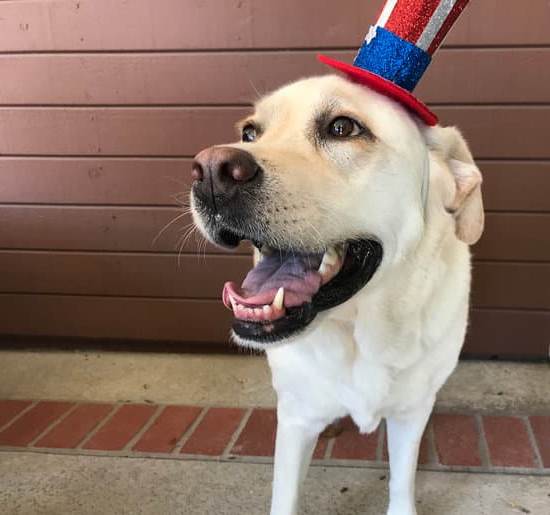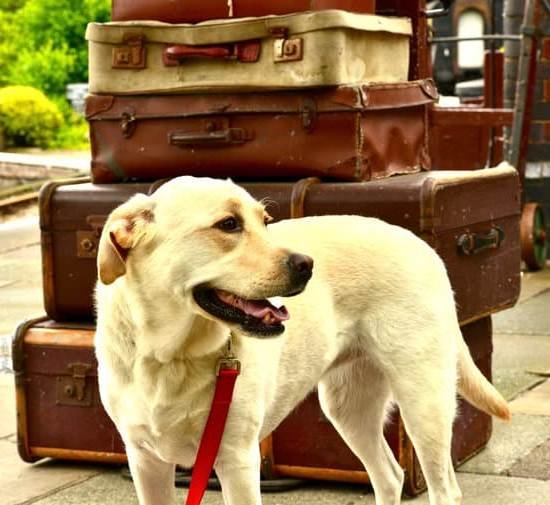Are you looking for a fun and impressive trick to teach your dog? In this article, we will explore the exciting world of training your canine companion to fetch you a cold beer. Yes, you read that right. You can indeed train your furry friend to bring you a refreshing beverage from the fridge.
Training your dog to perform practical tasks like fetching a beer not only showcases their intelligence and abilities but also strengthens the bond between you and your pet. It’s a win-win situation; you get to enjoy the convenience of having your dog assist you in small tasks, while they get mental stimulation and an opportunity to please their owner.
With the use of positive reinforcement and patience, teaching your dog to retrieve a beer can be an enjoyable process for both of you. This article will guide you through the essential steps, from understanding positive reinforcement techniques to troubleshooting common challenges, ensuring a safe and enjoyable training experience for both you and your four-legged companion. So, let’s dive into the world of training dogs for practical tasks and have some fun along the way.
Understanding Positive Reinforcement
Positive reinforcement is a powerful and effective training method that can be used to teach dogs a wide range of tasks, including fetching a beer. By understanding and implementing positive reinforcement techniques, you can effectively train your dog to perform this fun and practical task.
What Is Positive Reinforcement?
Positive reinforcement involves rewarding desired behavior with something pleasant or rewarding, such as treats, praise, or toys. When it comes to training a dog to get a beer, positive reinforcement can be used to encourage and reinforce the behavior of retrieving the beer, creating a positive association with the task.
Applying Positive Reinforcement to Beer Retrieval Training
When teaching your dog to get a beer, it’s important to use positive reinforcement consistently. Start by breaking down the task into smaller steps and rewarding your dog for each successful progression. For example, reward your dog for approaching the fridge, then for touching the fridge door, and finally for grabbing the beer bottle. This gradual approach using positive reinforcement will help your dog understand what behavior is being rewarded and increase their motivation to perform the task.
The Role of Consistency and Patience
Consistency and patience are essential when using positive reinforcement to train your dog to get a beer. Be consistent in your training methods and ensure that all family members or individuals involved in training are on the same page.
Additionally, be patient with your dog as they learn this new skill – every dog learns at their own pace, so it’s important not to rush the process. With time, consistency, and plenty of positive reinforcement, you’ll soon have a canine companion ready to fetch you a cold one on command.
Choosing the Right Dog
When it comes to training a dog to perform specific tasks, it’s important to consider the breed and traits of the dog. Not all dogs are suited for beer retrieval training, so choosing the right dog is crucial for success. Here are some factors to consider when selecting a dog for this type of training:
- Size and Strength: Larger breeds such as Labrador Retrievers, Golden Retrievers, and Bernese Mountain Dogs are typically better equipped to carry a beer without causing any harm to themselves or the beverage.
- Temperament: It’s essential to choose a dog with a calm and obedient temperament. Dogs that are easily excitable or have a high prey drive may struggle with focusing on the task at hand.
- Intelligence: Breeds known for their intelligence, such as Border Collies, Poodles, and Australian Shepherds, tend to pick up on new commands quickly and can excel in more complex training tasks.
Once you have selected the right breed for beer retrieval training, it’s important to assess your individual dog’s personality and willingness to learn. No matter what breed you choose, positive reinforcement is key when it comes to teaching your dog how to get a beer.
By selecting a breed with the appropriate size, temperament, and intelligence levels, you can set your dog up for success in learning how to retrieve a beer in a safe and enjoyable manner. Remember that every dog is unique, so be patient and understanding as you train your furry friend in this fun and practical skill.
Basic Obedience Training
Establishing Basic Commands
Before you can start training your dog to retrieve a beer, it’s important to ensure that they have a solid foundation in basic obedience commands. This includes commands such as sit, stay, and come, which will be essential for the more advanced task of beer retrieval. Using positive reinforcement techniques, such as treats and praise, will help your dog understand and follow these commands effectively.
Consistency Is Key
Consistency is crucial when it comes to basic obedience training. Make sure that all family members or anyone who interacts regularly with your dog are consistent in their use of commands and rewards. This will prevent confusion for your dog and make it easier for them to understand what is expected of them.
Persistence and Patience
Training a dog takes time, patience, and persistence. It’s important not to get frustrated if progress is slow or if your dog seems to be struggling with certain commands. Every dog learns at their own pace, so it’s essential to remain patient and continue practicing regularly. With dedication and the use of positive reinforcement, your dog will gradually build a strong foundation in basic obedience training, setting the stage for more advanced tasks like beer retrieval.
Teaching the Fetch Command
Teaching your dog to fetch a beer can be a fun and practical skill that strengthens the bond between you and your furry companion. Positive reinforcement is the key to training a dog to get a beer, as it encourages good behavior through rewards and praise. Before embarking on this advanced training, it’s important to ensure that your dog has a strong foundation in basic obedience commands such as sit, stay, and come.
To begin teaching your dog to fetch a beer, start with the basics of teaching the fetch command using their favorite toy or object. Use positive reinforcement by offering treats and verbal praise when they bring back the item. Once they have mastered fetching their toy, you can transition to using an empty bottle or can as practice for retrieving a beer.
When your dog is comfortable fetching the empty bottle or can, introduce them to the beer. Start by having them retrieve an unopened beer from a cooler or fridge at home before moving on to fetching one from someone’s hand at a safe distance. Always use caution and ensure that your dog is not put in any dangerous situations while practicing this skill.
It’s important to remember that not all dogs are suited for beer retrieval training. Breeds known for their obedience, intelligence, and eagerness to please like Labrador Retrievers, Golden Retrievers, and Border Collies tend to excel in this type of training. However any breed of dog properly trained can do so but it might take longer with some breeds than others. Remember that patience and consistency are key when training your dog to get a beer.
Introducing the Beer
Training your dog to retrieve a beer can be a fun and rewarding experience for both you and your furry friend. However, before you begin this advanced task, it’s important to first familiarize your dog with the object of retrieval – in this case, a beer.
To start, it’s crucial to ensure that your dog already has a strong foundation in basic obedience training. This includes commands such as sit, stay, and come. If your dog is not yet proficient in these basic commands, it’s best to work on them before moving on to beer retrieval training.
Once your dog has a solid understanding of basic obedience commands, you can begin introducing the beer into the training process. Start by placing a closed or empty beer can on the ground and using positive reinforcement techniques to encourage your dog to approach and investigate the object. Reward your dog with treats and praise when they show interest in the beer can, reinforcing the idea that approaching the beer is a positive behavior.
As your dog becomes more comfortable with the presence of the beer can, you can gradually introduce more complex tasks, such as picking up the can and bringing it to you. Remember to always use positive reinforcement and patience during this process, as every dog learns at their own pace.
When introducing your dog to the beer for retrieval training, keep in mind that safety should always be a top priority. Be mindful of sharp edges on cans or bottles, and ensure that your dog does not attempt to ingest any part of the container.
Always supervise your dog during training sessions and provide plenty of praise and rewards for their progress. With time, patience, and positive reinforcement, you can train your dog to successfully retrieve a cold beer for you.
| Training Steps | Description |
|---|---|
| Basic Obedience Training | Ensure your dog has mastered basic commands before introducing them to retrieving a beer. |
| Positive Reinforcement | Use treats and praise to encourage your dog’s interest in the beer can. |
| Safety First | Always prioritize safety during training – be mindful of sharp edges on cans or bottles. |
Adding Complexity
Once your dog has mastered the basic fetch command and is comfortable retrieving a beer, it’s time to add complexity to their training. Advanced techniques for beer retrieval will challenge your dog both mentally and physically, but with patience and consistency, they can learn to perform this impressive task.
To advance your dog’s beer retrieval skills, consider incorporating the following techniques:
- Distance Training: Start by increasing the distance between you and the beer when giving the fetch command. This will not only test your dog’s understanding of the command but also improve their ability to locate and retrieve the beer from a distance.
- Obstacle Training: Introduce obstacles such as furniture or outdoor features to simulate real-life scenarios where your dog may need to navigate around objects to retrieve a beer. This will sharpen their problem-solving skills and agility.
- Distraction Training: Practice beer retrieval in different environments with varying levels of distractions, such as other people or animals nearby. Training in different settings will help your dog stay focused on the task at hand, regardless of external stimuli.
As you introduce these advanced training techniques, remember the importance of positive reinforcement. Praise and reward your dog for successfully completing each step, and be patient if they struggle initially. With consistent practice and encouragement, your furry friend will become proficient at retrieving that ice-cold beer for you.
Lastly, it’s crucial to maintain a safe training environment throughout this advanced training process. Always supervise your dog during training sessions to prevent any accidents or mishaps while practicing these more challenging tasks.
By integrating these advanced techniques into your dog’s beer retrieval training regimen, you’ll not only enhance their skills but also strengthen the bond between you and your beloved pet. Cheers to a well-trained pup.
Troubleshooting
Training a dog to fetch a beer can be an entertaining and impressive task, but it comes with its own set of challenges. It’s important to troubleshoot common issues that may arise during the training process in order to ensure success.
One common challenge is getting your dog to understand the concept of picking up a beer without causing damage or spillage. To address this, start by using an empty or unopened can to avoid any messes while your dog is still learning.
Another challenge that many dog owners face when training their furry companions to fetch a beer is getting them to release the can without damaging it or dropping it too forcefully. To overcome this, incorporate the “drop it” command into your training sessions and reward your dog for gently releasing the beer into your hand.
Additionally, some dogs may struggle with the idea of carrying an object as delicate as a beer without chewing on it or causing damage. If you encounter this issue, work on reinforcing the “leave it” command during your training sessions and provide appropriate chew toys for your dog to redirect their chewing behavior. With patience and consistent training, you can help your dog understand how to handle the beer gently and responsibly.
Safety Considerations
When training your dog to get a beer, it’s important to ensure that the entire process is both safe and enjoyable for both you and your furry friend. Safety considerations play a crucial role in the success of this training, as well as in maintaining a positive relationship with your dog.
First and foremost, it’s essential to choose the right size and weight of beer or beverage for your dog to retrieve. Selecting a bottle or can that is lightweight and easy for your dog to carry without straining themselves is crucial. Additionally, be mindful of the materials the bottle or can is made of, ensuring that it will not harm your dog’s mouth or teeth.
Another safety consideration when training your dog to get a beer is to create a designated area for training where there are minimal distractions. This allows you to focus on the training process without any potential hazards or interruptions. It’s also important to keep the training sessions short and positive, avoiding any signs of distress or discomfort in your dog.
Lastly, always monitor your dog during the training process to ensure they are not exhibiting signs of stress or fatigue. Remember that every dog is unique, so pay attention to their individual needs and limitations as you progress through the beer retrieval training process.
Overall, by prioritizing safety considerations throughout the training process, you can ensure that both you and your dog have an enjoyable experience while working towards mastering this fun and practical task together.
Conclusion
In conclusion, training your dog to get a beer can be a fun and rewarding experience for both you and your furry friend. Through understanding positive reinforcement, choosing the right dog breed, and providing basic obedience training, you can build a strong foundation for teaching advanced tasks such as beer retrieval. By following step-by-step training techniques and introducing your dog to the object of retrieval, you can gradually add complexity to their skills.
It’s important to remember that training a dog to get a beer should always prioritize safety. Ensuring a safe and enjoyable training experience not only protects your dog but also fosters a positive relationship between the two of you. By troubleshooting common challenges in beer retrieval training and being patient with your pet, you can work through any difficulties that may arise.
Ultimately, celebrating your dog’s new skill of retrieving a cold one can be a wonderful way to bond with your pet while enjoying a refreshing beverage. Whether for practical or entertainment purposes, training your dog in this unique task is not only achievable but also an opportunity to strengthen the bond between you and your canine companion.

Welcome to the blog! I am a professional dog trainer and have been working with dogs for many years. In this blog, I will be discussing various topics related to dog training, including tips, tricks, and advice. I hope you find this information helpful and informative. Thanks for reading!





